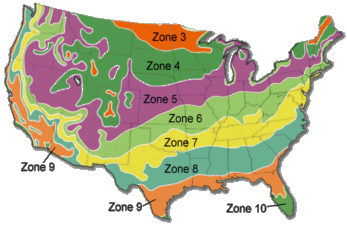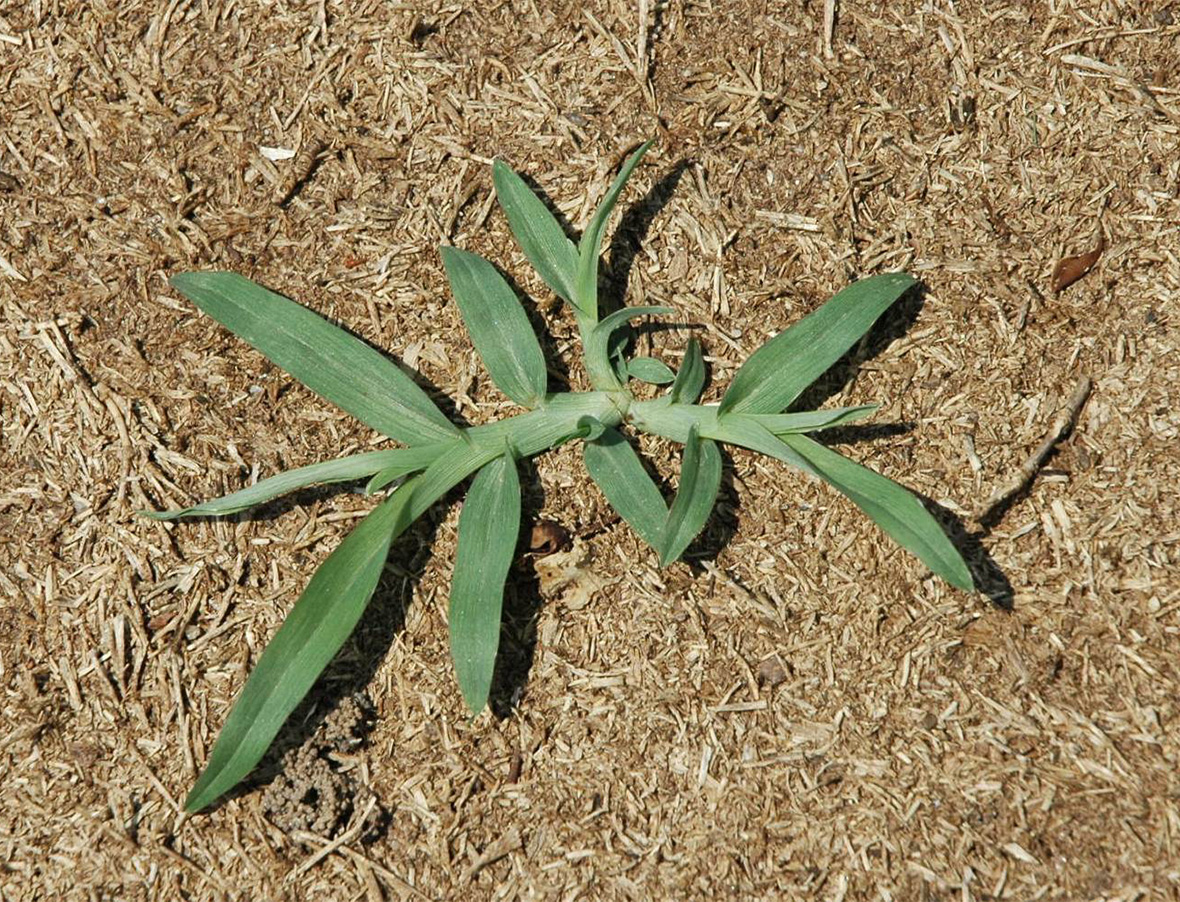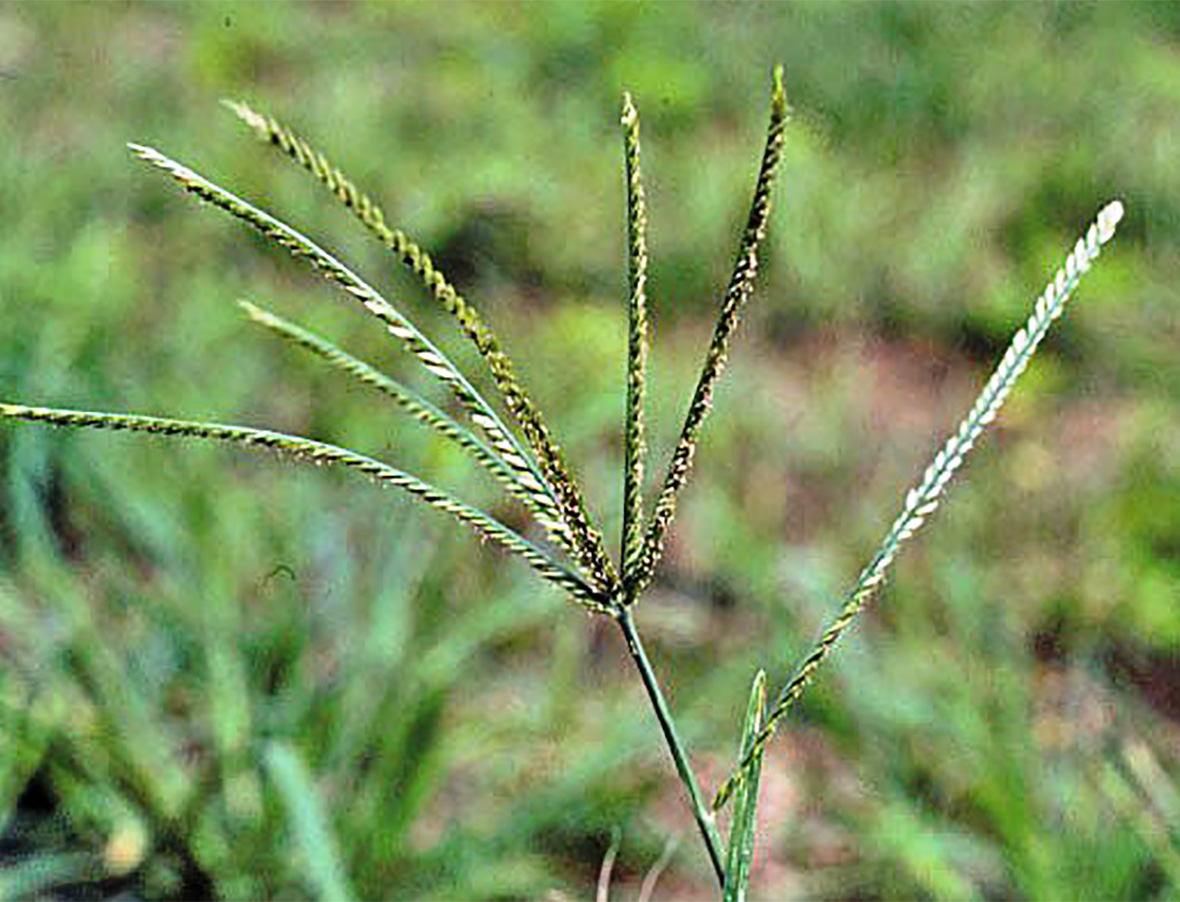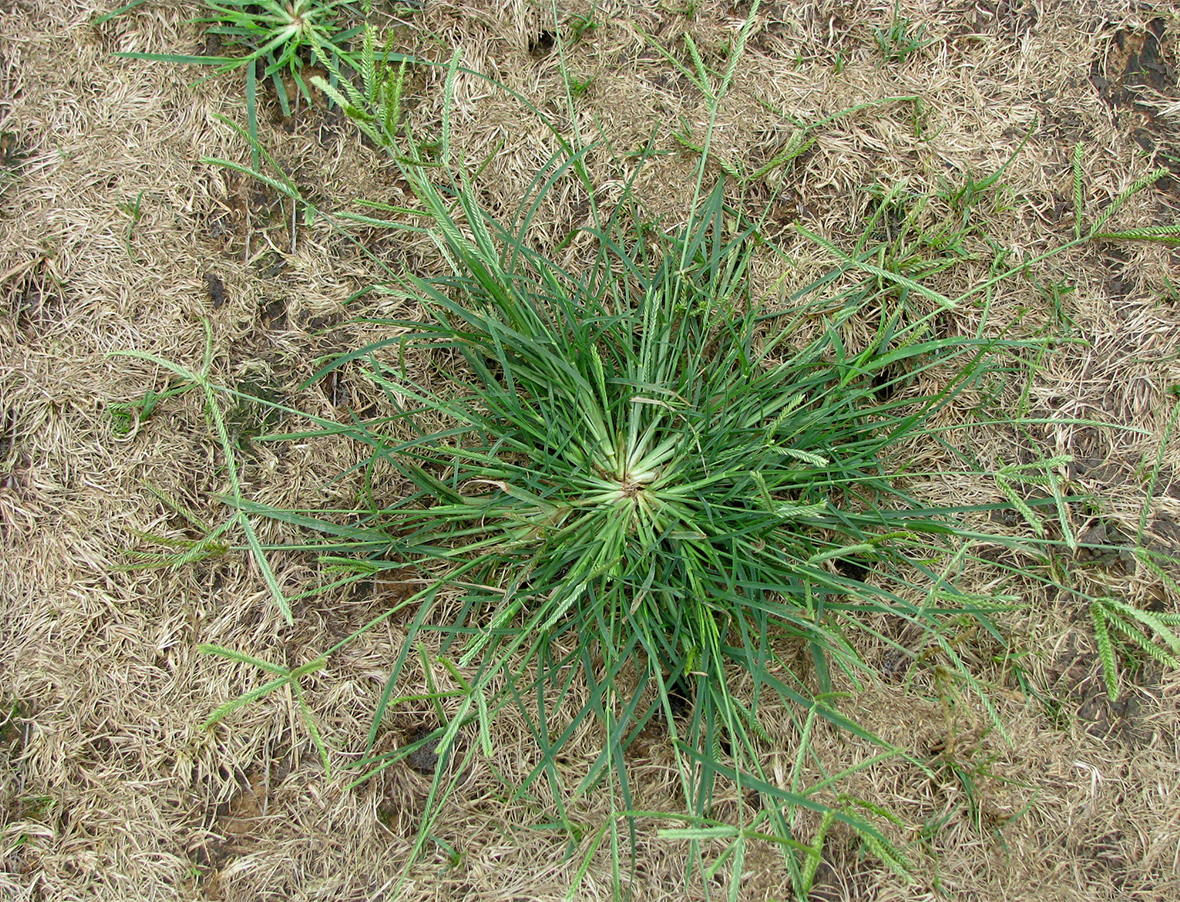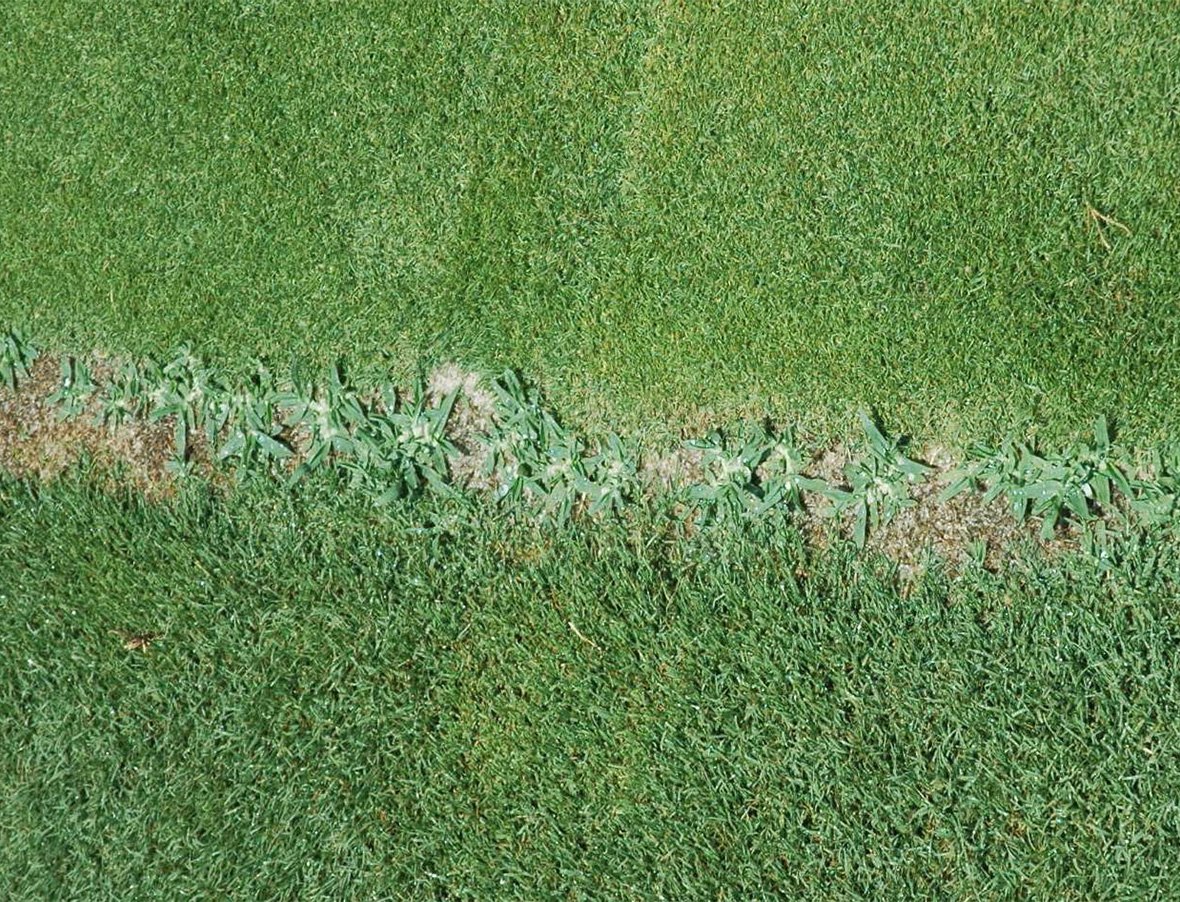Description
Goosegrass is a prostrate-growing summer annual. The leaves are folded in the bud. Goosegrass grows in a clump with the base of the leaves being distinctively white to silver in color. The ligule is toothed, membranous, and divided at the center. Goosegrass contains hairs only at the base of the leaf. Goosegrass seedheads contain 3 -7 spikes that form at the tip of the seed stalk. The seeds are attached in a zipper appearance on the spike. Goosegrass spreads by seeds that germinate later in the season than other annual grasses. Goosegrass seedheads contain 3 -7 spikes that form at the tip of the seed stalk. The seeds are attached in a zipper appearance on the spike. Goosegrass spreads by seeds that germinate later in the season than other annual grasses. Goosegrass is found in the United States from the transition zone south.
Weed Photos: Courtesy of Dr. Lambert McCarty. Clemson University. Clemson, SC.
Herbicide Use
Make a properly timed pre-emergence application, generally within two weeks after soil temperatures have reached a consistent 55 degrees F. After germination, use a post-emergent herbicide prior to tillering.
Distribution
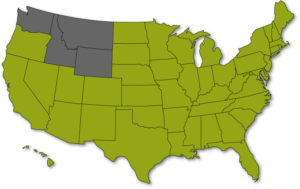
Germination Dates
